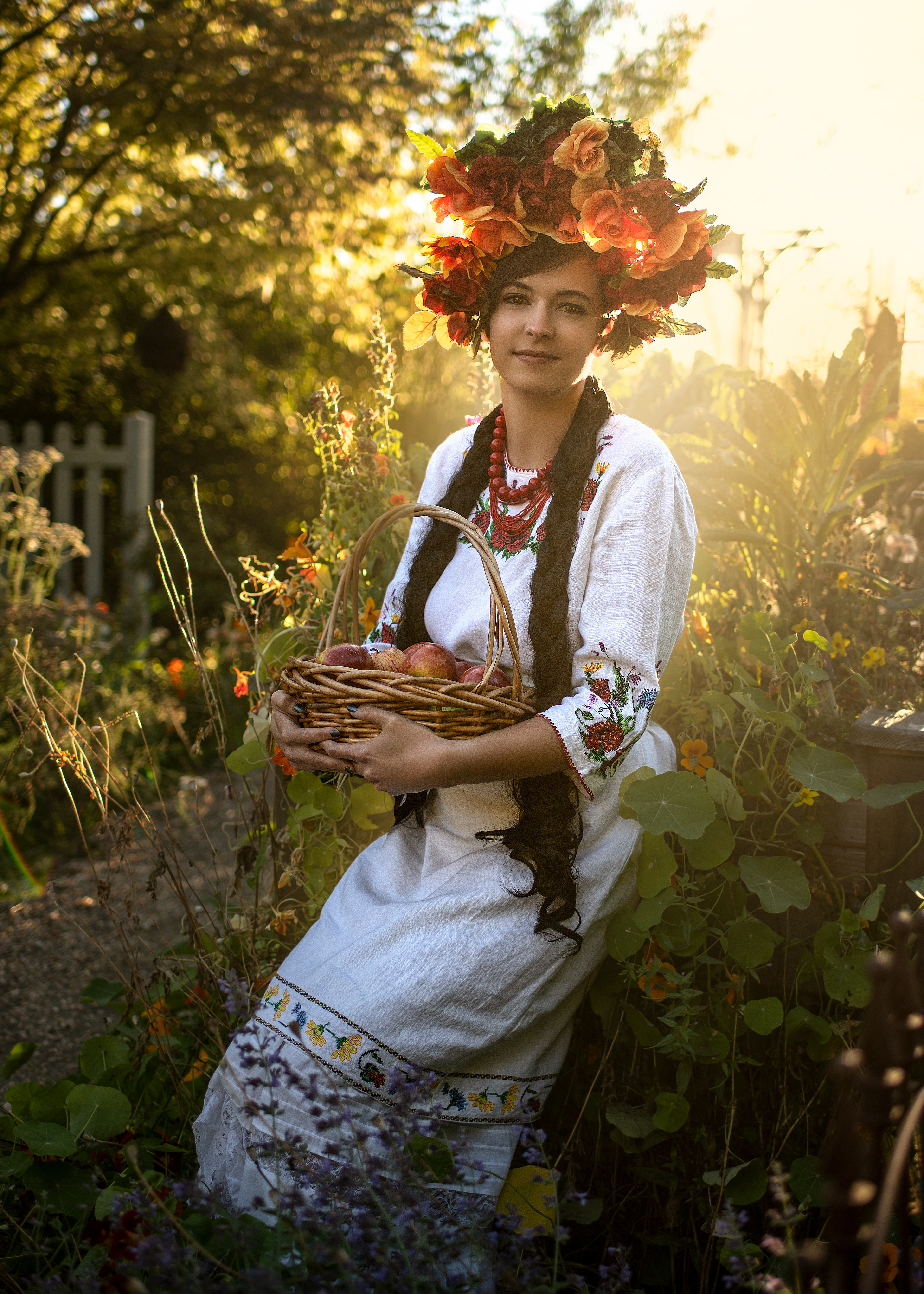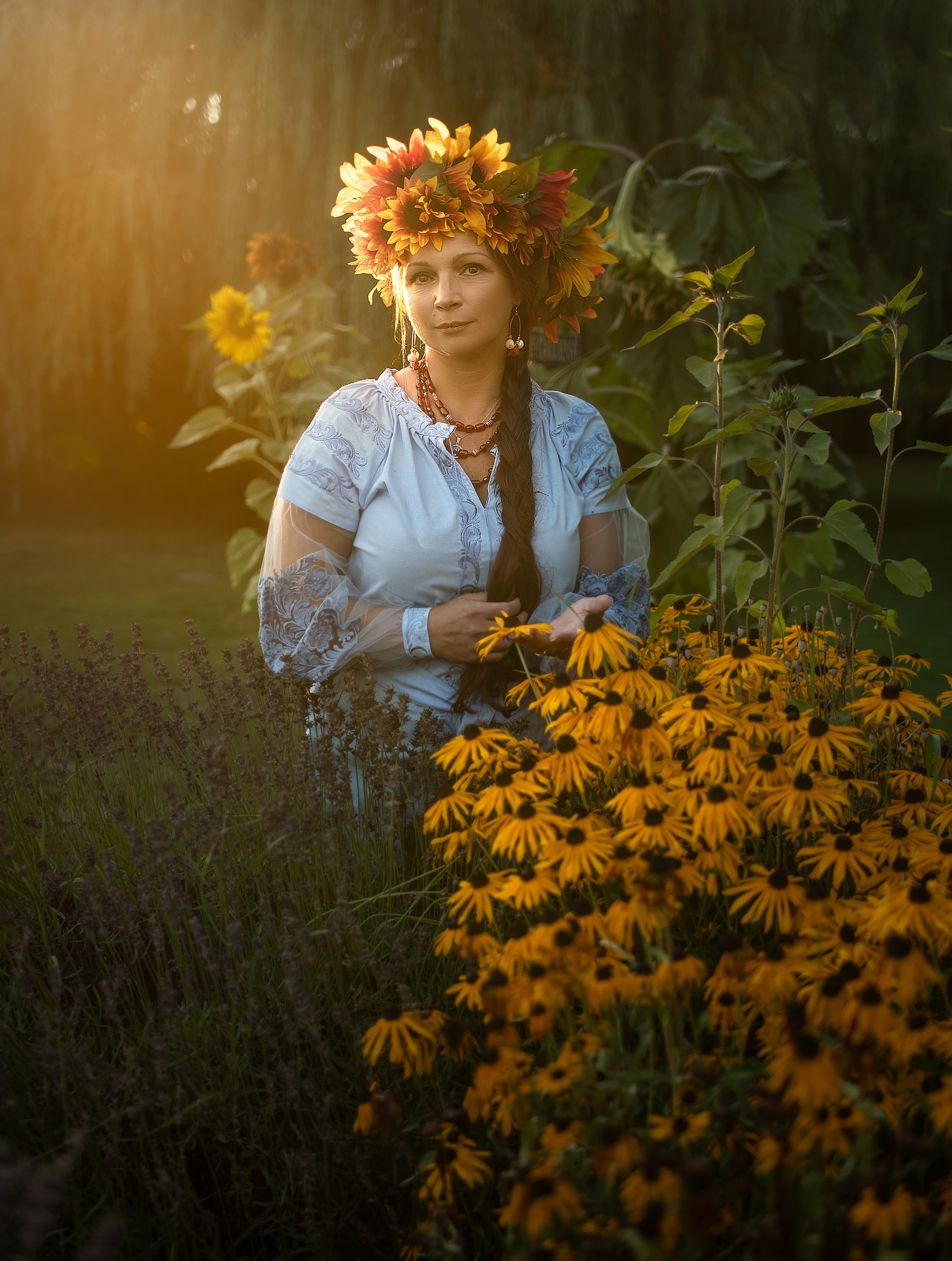Photography is a great way ways to preserve cultural traditions, and share the beauty and unique customs with the rest of the world. Traditional Slavic costumes for women consist of long skirts, blouses and tunics, magnificent floral head wreaths, scarves, or other decorative headdresses (vinok).
The embroidery is a fundamental element of the Slavic folk costume. It not only speaks of its Slavic origin, but also of the particular region in which it was made. The knowing eye could detect where a person lived by the very clothes they were wearing. Traditionally, the thread was colored according to local formulas using bark, leaves, flowers, berries and so on. In this way, the local environment is reflected in the colorful hues of the embroidery. Red was considered the most powerful color in embroidery.
The floral wreaths (Slavic: вінок, vinók) are traditionally crafted for girls and young, unmarried women as a sign of their "purity" and marital eligibility. The wreath may be part of a tradition dating back to ancient Slavic customs, when these headdresses were thought to protect innocent girls from evil spirits.
On the day of Ivan Kupala, young women placed their wreaths in a lake or river illuminated by a single candle, foretelling their romantic future by how the wreath moved across the water or down stream. From the wreath direction, a girl could discern whom she would marry. If the wreath stayed in one spot and did not move with the current, she would not marry, and if it sank, she would die. If the candle extinguished, misfortune would soon follow. Young men would dive into the water, attempting to retrieve the vinok of the girl each loved. One of the ritual Kupala songs says, "Who will catch the wreath will catch the girl, who will get the wreath will become mine."
Dating back to pre-Christian times, it was thought that these headdress would protect young girls from all manner of evil spirits. To aid in fending off these evil spirits, special signs and patterns were embroidered on clothing as well. It was believed that items handmade by blood relatives possessed the greatest power.


Plants were also thought have some power as love charms. These love charms were often used to predict who the person would marry. If a girl placed nine yarrow leaves (tysyachelistnik) under her pillow while saying a charm she would dream of her husband to be that very night. Honeysuckle (Zhimolost) brought into the house was thought to be a sure sign that a wedding would soon follow. And if it was brought into a girl's bedroom she would dream of her true love. Periwinkle (Barvinok) was the symbol of everlasting life and eternal love.
In Slavic rites of banishing evil, flowers and herbs take a very special role. St. John's Wort (Ivanova Trava) is considered one of the most powerful anti-demonic herbs. It is thought to absorb sunlight, and thus, brings fear to all dark evil spirits as they all share a fear of sunlight. Wormwood (Gorkaya polyn) is the second most powerful anti-demonic herb. The scent of this herb can banish practically any evil spirit from the household. Rusalka (the beautiful young mermaid) fear it, which is why on Ivan Kupala day (slavic people celebrate the summer solstice as the day of Ivan Kupala) nobody dared to approach water without this herb.
Some slavic legends state that on this night of Ivan Kupala, the beautiful young mermaid, Rusalka may be found in bodies of water. Rusalka entices young men to their demise. Although there are many different stories concerning the legend of Rusalka, they typically involve young women dying violent deaths sometimes at their own hands. Commonly, death is by drowning and often revolve around women betrayed by a lover or husband. During Ivan Kupala, Rusalka leaves her lake or swamp, and wonders through the woods searching for her lost love. When she comes upon a young man, she will lure him back into the dark water where he will spend eternity with her.
Needles of Common Juniper (Mozhzhevelnik obyknovennyy) are often used to banish the illness (slavic ancestors believed that illness was caused by an evil spirit entering the body). Stinging Nettle is known to stand up to evil sorcery. The Russian name for the common Thistle (Chertopolokh), is literally translated as Demon's Fear and Yarrow (Tysyachelistnik) weakens evil disallowing it's spread. Thyme ( Timyan or Bogoroditsa's Weed) is most commonly used by women for protection of themselves and their children.
Tansy (Pizhma) is used to scare away evil spirits and Cornflower (Vasil'kovy tsvet) will banish evil spirits and demons from a person. Purple Loosestrife (Purpurny v'yunok) was believed to make witches, sorcerers, and evil spirits cry. Violet (Violetta) was used as an incense to banish a demon from a person, and Birch (Bereza) leaves benefit those who have been affected by evil magic.
Source: A Russian Herbal: Traditional Remedies for Health and Healing by Igor Vilevich Zevin (Author), Nathaniel Altman Lilia Vasilevna Zevin, 1997